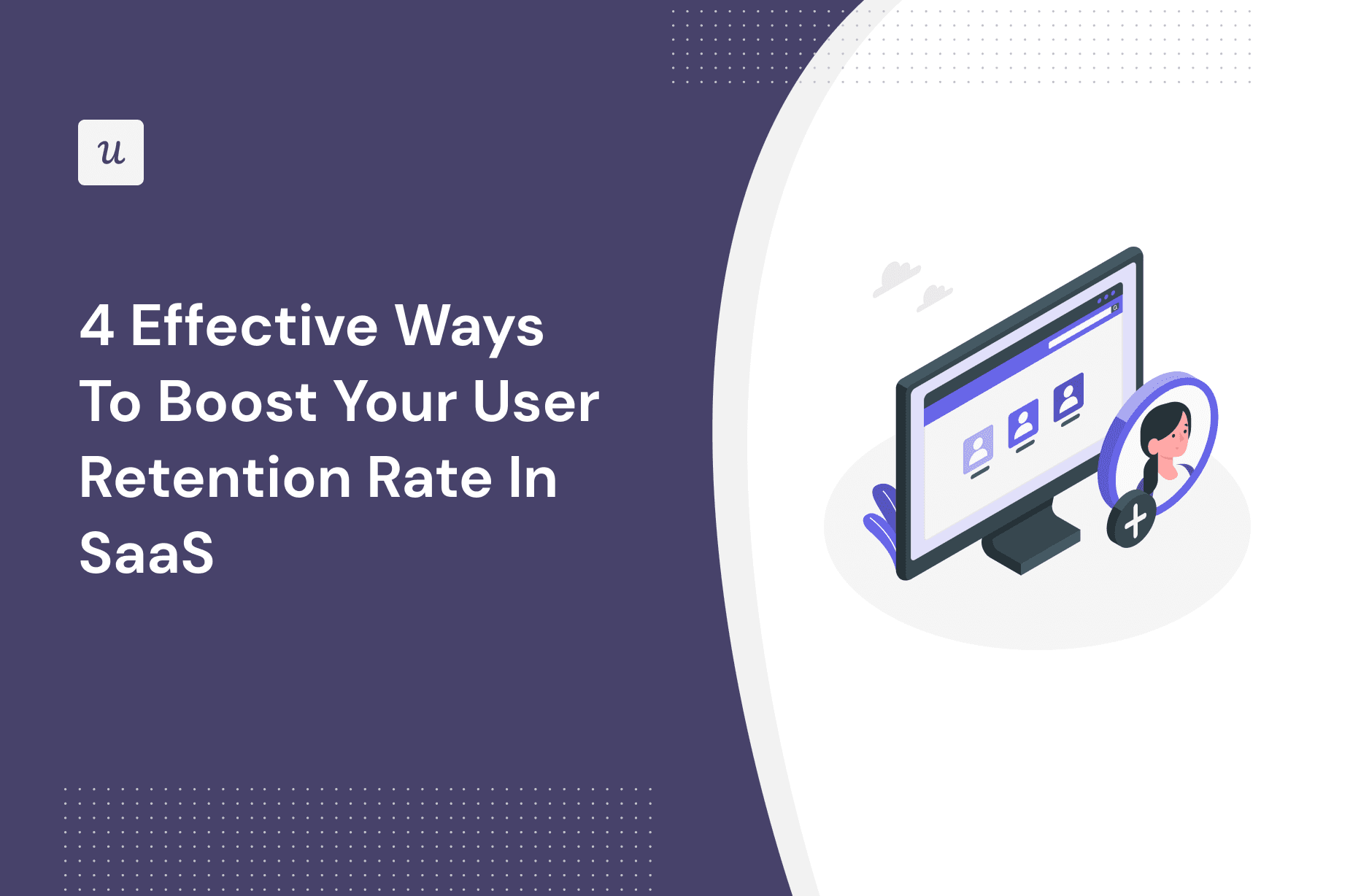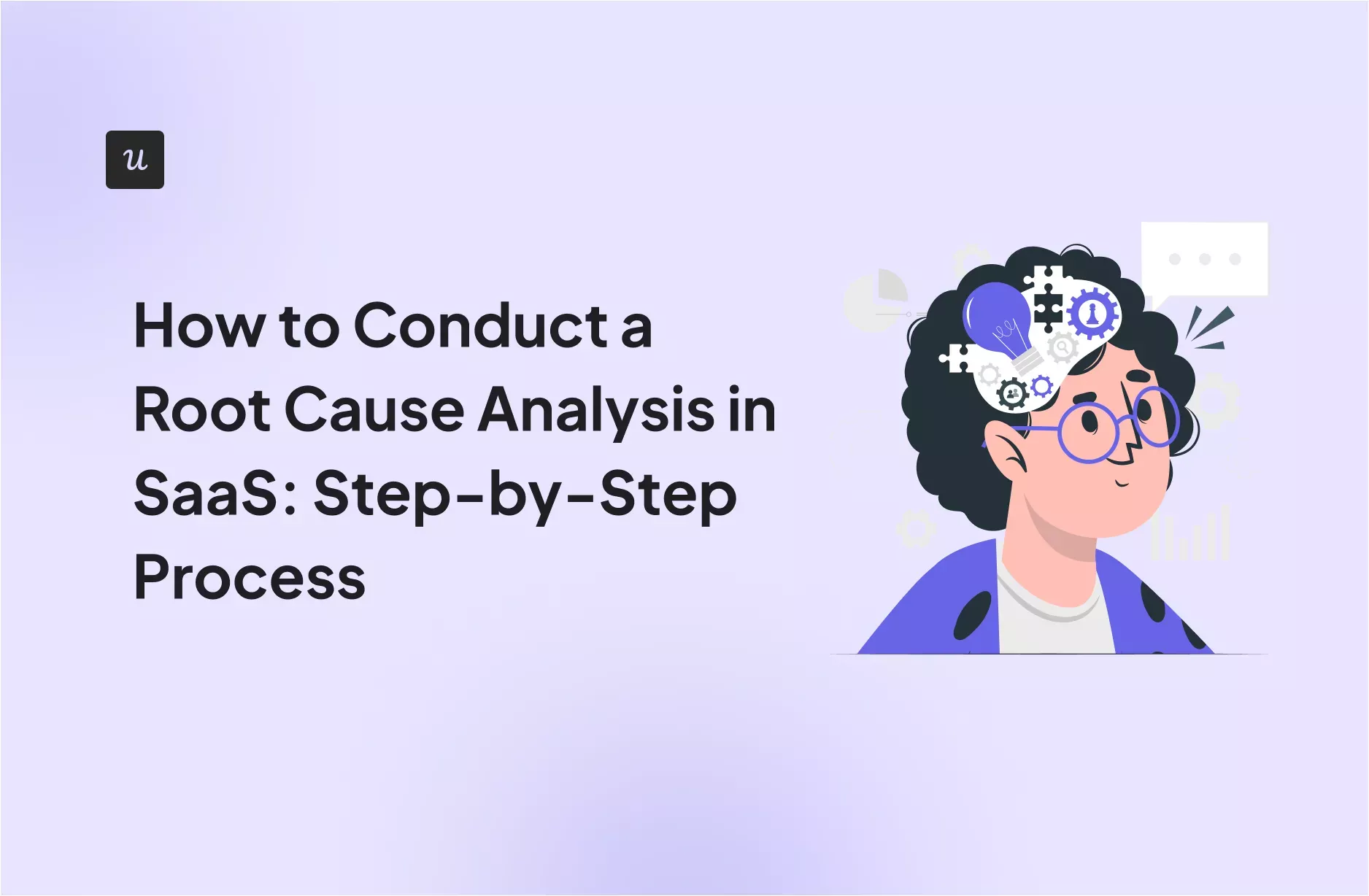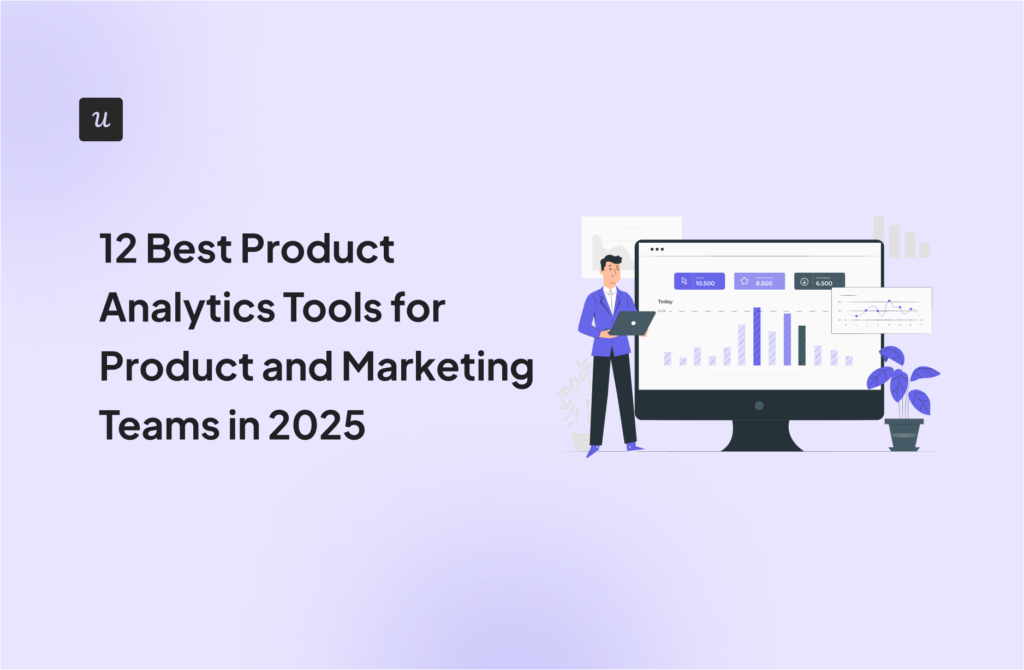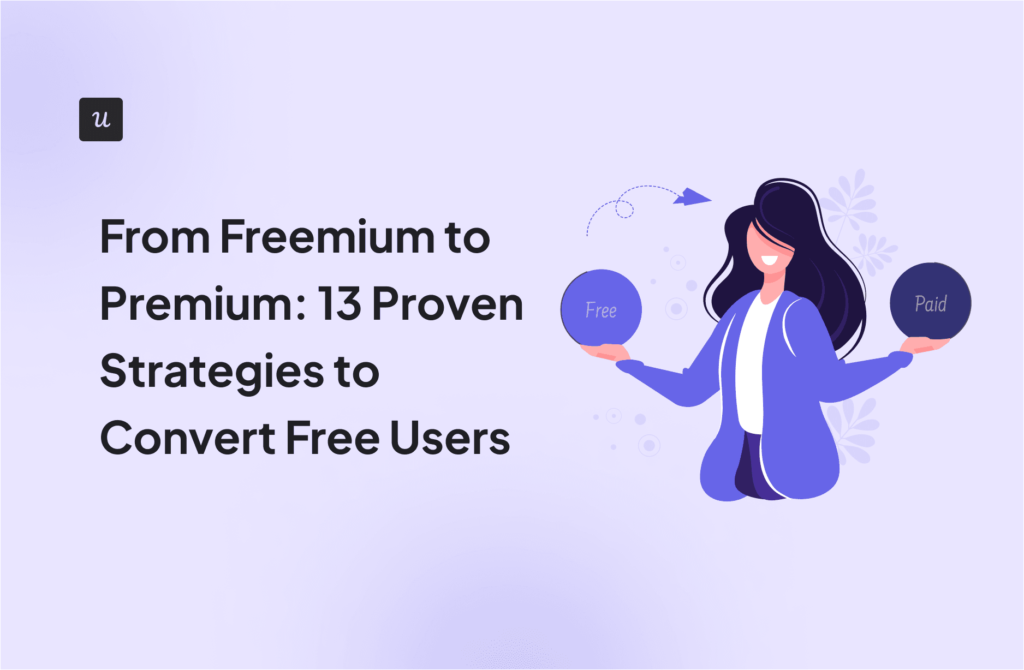
4 Effective Ways To Boost Your User Retention Rate In SaaS14 min read
Do you know that even a 5% increase in user retention can boost your profits by 25-125%?
Since SaaS businesses are subscription-based models, most of the revenue comes from repeat purchases, i.e., user retention. Thus, improving user retention can help you boost revenue growth.
In this article, we’ll look at the key retention metrics and what tactics you can use to improve retention. So, let’s dive in!
Get The Insights!
The fastest way to learn about Product Growth, Management & Trends.
TL;DR
- User retention is a metric that tells you how many users keep returning to your product over a given period.
- It’s 5-25 times more expensive to acquire new users than to retain existing ones.
- The user retention rate gives the percentage of users you’ve retained over a given period.
- Together with the user retention rate, 4 other metrics give you a holistic view of your retention including customer churn rate, Customer Lifetime Value, LTV-CAC ratio, and Net Promoter Score.
- You can use the following customer retention strategies for your SaaS:
- Secondary onboarding with personalized in-app messages helps drive feature adoption at different stages of the user journey.
- Onboarding gamification rewards customers for completing certain actions. This helps customers engage more with your product and resonate with your brand better.
- In-app self-service support allows customers to solve repetitive issues on their own, which lets the support team give more attention to serious, less frequent issues.
- In-app churn surveys are micro surveys that help you understand why users are churning so that you can take steps to prevent it and may even persuade them to return.
- Want to enhance product experience to improve customer retention rate? Book a Userpilot demo today!
Try Userpilot and Improve Your User Retention Rate!

What is user retention in SaaS?
User retention is a metric that gives the number of users who keep interacting with your product over a given period. It shows how well users are engaged with your app.
You can even measure retention for different user segments and particular user behaviors, such as using a certain feature or visiting an app.
Why is user retention important?
Customer retention is more affordable than customer acquisition. As a Harvard Business Review study showed, it’s 5-25 times more expensive to acquire new users than to retain existing ones.
The user retention process starts just after a user reaches the AHA! moment and adopts your product, e.g., by converting to a paying customer. Interestingly, a 5% boost in user retention leads to a 25-95% growth in revenue.
High retention reflects high customer satisfaction. They have experienced the value of your product, so they buy more often and spend more, allowing scope for account expansion.
Moreover, satisfied customers are more likely to remain loyal and spread positive word-of-mouth. Thus, they draw in new users free of cost.
How to measure user retention rate?
The user retention rate gives the percentage of users you’ve retained over a given time period. Tracking this metric at several points in your product growth or marketing efforts can offer real-time feedback and guide you in the correct direction.
To measure the retention rate, calculate the number of users at the end of the period minus the number of new users acquired during the period. Then, divide this by the total number of users at the start of the period and multiply by 100 to get your retention rate.

You can calculate retention using any of the following time ranges based on your need.
- Day 1 retention
- 7-day range retention
- Week 1 retention
- 1-month retention
What are other user retention metrics?
Along with the user retention rate, there are other important retention metrics you need to use to have a holistic view of your SaaS retention. These metrics provide actionable insights into how well you provide value to your users.
So, let’s go over 4 key user retention metrics:
Customer churn rate
The customer churn rate tells you about the percentage of customers lost during a specific period. It’s measured by using subscription cancellations.
Actively tracking churn allows you to clearly understand how many users are unhappy with your product. You can use such data to make product improvements so you can take measures to reduce churn and thus boost user retention rate.
The customer churn rate is equal to the number of churned customers during a given period by the number of customers at the beginning of that period, multiplied by 100.

You can calculate churn on a weekly, monthly, or yearly basis. Typically, most companies like to measure it monthly or yearly.
To find the yearly churn rate, just multiply the monthly rate by 12. Both the monthly and yearly churn rates provide the same insights – the number of customers you’ve lost, but over different periods.
Customer lifetime value
Customer Lifetime Value (LTV or CLV) is the expected revenue stream that a company earns from one customer over the course of their business journey with you. This is also a metric that indicates how good your business is at retaining customers.
Aside from that, it helps you know how profitable each user is so that you can understand just how much you’ll be able to spend on acquiring new customers.
You can calculate your LTV in more than one way. The quickest and simplest way is to multiply customer value by average customer lifespan.

LTV is especially valuable for companies with a large customer base and high transaction rates. However, with a few clients and even fewer enterprise-level users, it’s better to focus your attention more on the number of users acquired.
In most SaaS businesses, the CFO is responsible for monitoring vital financial metrics, including the LTV. But in a small company, the CEO can take the lead on tracking these metrics.
LTV to CAC ratio
Let’s see how your Customer Lifetime Value can help you justify your acquisition efforts.
The Customer Lifetime Value to Customer Acquisition Cost ratio determines whether the revenue generated by your users justifies the efforts you put into customer acquisition.
If your LTV to CAC ratio is below 1, it suggests that you spend more on acquiring customers than what they give you in return. Growing your business at a financial loss may work in the early stages, but it won’t sustain it for the long run.
Therefore, you should maintain an LTV-CAC ratio of at least 3 to have a healthy business.
Keep in mind that Cost Per Acquisition and Customer Acquisition Cost (CAC) are two separate metrics. While CAC gives the cost of acquiring paying customers, CPA gives the cost of acquiring non-paying users.

Net Promoter Score
The Net Promoter Score (NPS) is a measure of user sentiment and the most reliable indicator of customer satisfaction. This should be a part of your customer loyalty program where you regularly assess and gauge the satisfaction levels of your customers.
To measure NPS, you use an NPS survey that asks users how likely they are to recommend your product to others on a scale of 1-10.

Promoters are the most loyal customers who rate your product 9 or 10. On the other hand, detractors are your unhappy customers who rate you 6 or below. So they are most likely to churn and leave reviews on their terrible customer experience.
To collect actionable customer feedback and understand why users give a certain score, you can add an NPS follow-up question like the one below.
This will help you understand what makes your customers happy and what makes them disappointed. Therefore, you can use the information to improve your product and user experiences and even convert detractors to promoters. This will help you reduce churn and increase customer retention.

4 effective ways to boost your user retention rate
Now that you know the key retention metrics, let’s look at how you can feed the insights from these metrics into your user retention strategy.
- Retain existing customers with secondary onboarding.
- Use onboarding gamification to boost product engagement.
- Offer in-app self-service support to help existing customers.
- Improve user retention with churn surveys.
Retain existing customers with secondary onboarding
Your initial onboarding is not enough to retain customers for long-term growth. You need continuous onboarding at every stage of the user journey to boost customer retention and provide more value.
As shown in the image below, users first reach the AHA! moment when they realize the value of your product. When they finally use a core product feature and experience value for the first time, they activate.
Secondary onboarding is where you push users further in their journey to grow your revenue sustainably. You use in-app experiences to onboard your activated customers onto the secondary features and convert them into power users and brand advocates.

The secondary features give you more use cases. And the more the use cases, the stickier your product. This translates to higher user retention.
Secondary and tertiary onboarding focus on user retention by keeping users constantly engaged. They include applying proactive onboarding tactics such as modals for new feature launches or onboarding checklists for advanced features.

In-app messaging is all about sending timely and contextual messages to your users to help them through different stages of the user journey.
Sending in-app messages at the relevant moment will increase the value customers get and thus improve customer retention. You can use in-app messages to:
- Encourage feature adoption and drive account expansion.
- Gather customer feedback on your product and their experiences.
- Onboard users more effectively by providing in-app guidance on using the product or suggesting features users might be missing out on.
- Notify customers about updates and announcements. For example, the picture below shows an in-app new feature announcement built with Userpilot.

Use onboarding gamification to boost product engagement
Introducing gamification in your onboarding process can drive engagement if your product is valuable to users. This, in turn, will lead to higher customer retention rates.

Gamification is a process of incentivizing your users to carry out certain activities by using game-like techniques.
It takes a “learn by doing” approach to keep users entertained and, at the same time, motivate them to activate and adopt certain features.
You can ensure long-term retention through habit formation. If you can make your product a part of your users’ daily lives, they will be the least likely to leave.
To this end, you can use XP, badges, points, or leaderboards to reward customers for using your product. When you reward them, it psychologically incentivizes them to return to your product. This will help them gain value faster and solidify their loyalty.
After all, the best way to earn customer loyalty is to create multiple AHA! moments along the user journey so that customers keep adopting more relevant features along the way.
Moreover, different user segments will have different AHA! moments. That is why it’s crucial to create several opportunities for users to reach the activation point.
Here’s an example of gamification, where ProdPad offers extended trial runs to users who complete actions like adding an idea or inviting a colleague.

Offer in-app self-service support to help existing customers
In the era of product-led growth, self-serve onboarding is critical for customer retention as it’s designed to scale your business. In-app self-service support is one such aspect of self-serve onboarding.
Self-service support is the key to satisfying your customers. According to Harvard Business Review, 81% of users try to solve their problems before reaching out to the support team for help.
You will get the best results when the self-serve elements work together with the human agents.
Self-service support allows users to solve repetitive issues by themselves, which reduces reliance on your support team. This gives the support staff time to address more pressing matters.
You can use elements like help centers, knowledge base, micro-videos, interactive walkthroughs, widgets, and onboarding surveys to help users.
Below is the Userpilot resource center that comes with FAQs, a knowledge base, and status checks, among others.

Improve user retention with churn surveys
Churn surveys, also called cancellation surveys or exit surveys, should also be a part of your customer retention strategy. They contain short questions you can send to customers after they downgrade or cancel their subscriptions.
Using churn surveys can help you understand why your customers are churning so that you can act on the feedback to improve your product engagement.
As opposed to email churn surveys, in-app ones are contextual since they pop up right after a subscription is canceled.
Emails may get lost in the inbox, but users can’t miss any in-app surveys. In addition, there’s a greater chance that they’ll change their mind if you can show them what they’re missing out on, based on their responses.
In fact, you can even automate personalized in-app responses to their answers. For instance, you can provide users an option to pause their accounts instead of leaving your product entirely.
Churn surveys can have 3 types of questions:
- Open-ended questions
- Multiple-choice questions
- Mixed questions
This is an example of a churn survey with mixed questions. The multiple-choice question is compulsory, with an Other choice that lets users share any other reason they may have.

Conclusion
User retention is a must for sustainable growth in any SaaS company.
You can use the 5 key metrics for measuring retention and then incorporate the insights into your retention strategy. Secondary onboarding, gamification, in-app self-service support, and churn surveys are the best tactics to drive user retention.
Want to improve your user retention? Book a demo call with our Userpilot team and see how you can do it easily!
Try Userpilot and Improve Your User Retention Rate!








